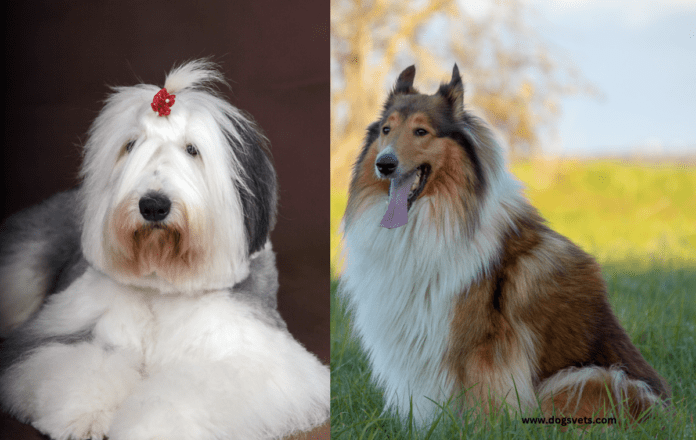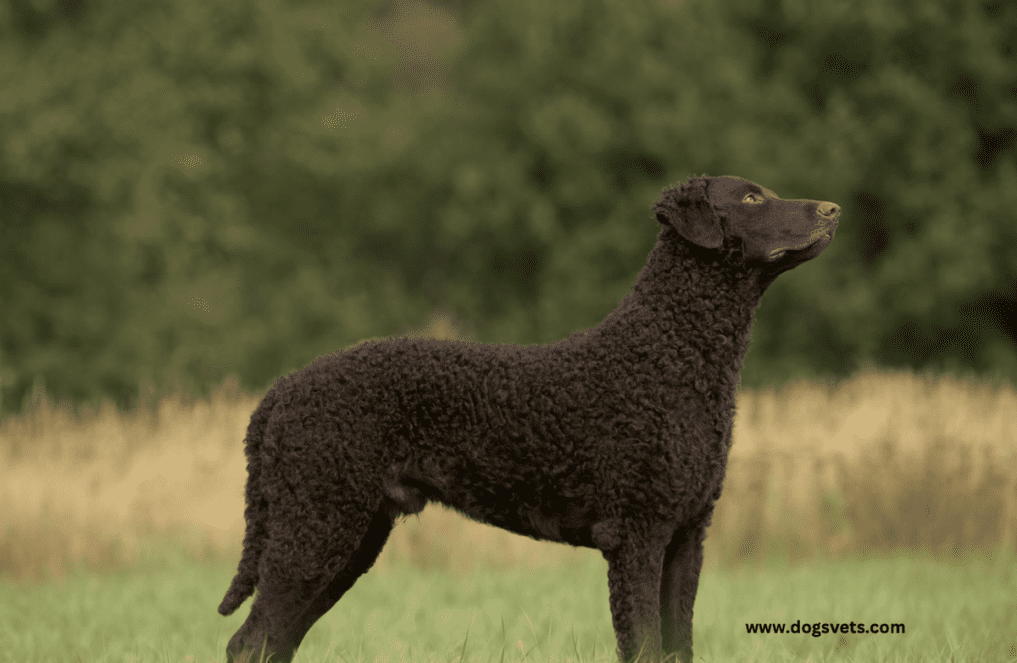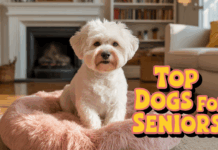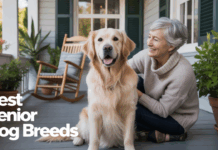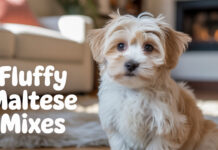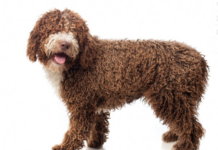Last Updated on January 29, 2023 by Dogs Vets
15 Long Hair Dog Breeds With Amazing Looks
Discover 15 Long Hair Dog Breeds – Complete Breed Overview, Physical Characteristics, Height, Weight, Lifespan, and Grooming Tips”
Long haired dog breeds are known for their luxurious, flowing coats that require regular grooming to maintain their beauty.
These breeds come in a variety of sizes and shapes, and they each have their own unique personality and characteristics.
Here are 15 long hair dog breeds with amazing looks that are sure to turn heads.
#1. Afghan Hound
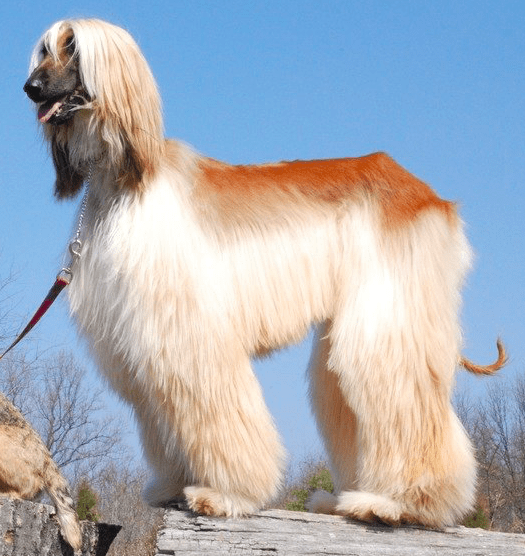
The Afghan Hound is a large, elegant breed with a long, silky coat that can be any colour. This breed stands between 25-29 inches tall and weighs between 50-60 pounds.
They have a lifespan of 12-15 years. This breed is known for its independent nature and requires regular grooming to maintain its coat.
#2. Bichon Frise
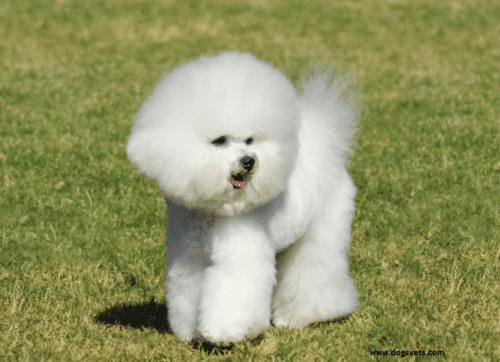
The Bichon Frise is a small, fluffy breed with a long, curly, white coat. This breed stands between 9-11 inches tall and weighs between 8-12 pounds.
They have a lifespan of 12-15 years. The Bichon Frise is a friendly, playful breed that is great with children and other pets.
They have a low shedding coat, which makes them a great choice for people with allergies. Regular grooming is required to maintain their coat’s fluffy appearance.
#3. Border Collie
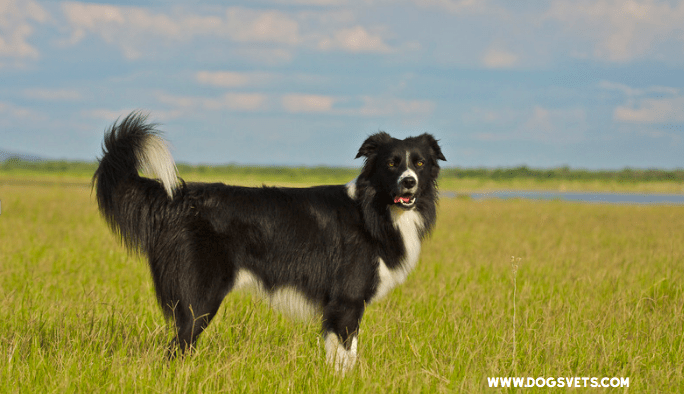
The Border Collie is a medium-sized breed with a long, thick coat that can be black, white, or a combination of both. This breed stands between 18-22 inches tall and weighs between 30-45 pounds. They have a lifespan of 12-15 years.
The Border Collie is a highly intelligent breed that excels in obedience and agility training. They are also known to be very active and require regular exercise to keep them happy and healthy.
#4. Chow Chow
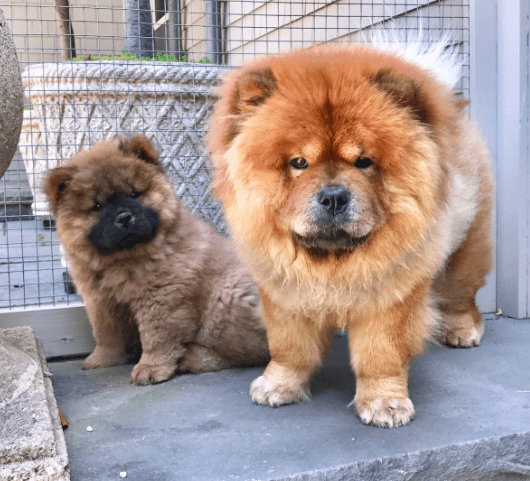
The Chow Chow is a large breed with a thick, fluffy coat that can be red, black, blue, or cream in color. This breed stands between 17-20 inches tall and weighs between 45-70 pounds. They have a lifespan of 12-15 years.
The Chow Chow is an independent and reserved breed that can be aloof with strangers. They require regular grooming to maintain their thick coat.
#5. Cocker Spaniel

The Cocker Spaniel is a medium-sized breed with a long, silky coat that can be black, brown, or a combination of both. This breed stands between 13-15 inches tall and weighs between 20-30 pounds. They have a lifespan of 12-15 years.
The Cocker Spaniel is a friendly, outgoing breed that is great with children and other pets. They require regular grooming to maintain their coat’s appearance.
#6. Komondor dog

The Komondor is a large, muscular dog breed that is known for its unique corded coat. This breed is also known as the Hungarian sheepdog and is believed to have originated in Hungary over a thousand years ago.
The Komondor’s coat is made up of long, thick cords that give the appearance of a mop.
The coat is usually white and requires a lot of grooming to maintain its cords.
The cords are usually allowed to grow to the ground, and they can weigh up to 15 pounds. The coat acts as a natural camouflage and protection for the dog while it guards its flock.
The Komondor is a strong breed, with a height of 27-30 inches and a weight of 80-100 pounds. They have a lifespan of 10-12 years. The breed is known for its courage, loyalty, and protective nature, making them an excellent guard dog.
However, due to the unique coat, the Komondor is not a breed for everyone. They are not recommended for first-time dog owners, as the coat requires regular grooming and maintenance, and it takes a lot of work to keep it looking good.
If you’re considering a Komondor, you should be prepared to commit to regular grooming and be prepared for the amount of shedding.
#7. Curly Coated Retriever
The Curly Coated Retriever is a large breed with a tight, curly coat that can be black or liver. This breed stands between 26-28 inches tall and weighs between 60-80 pounds.
They have a lifespan of 12-15 years. The Curly Coated Retriever is a friendly, outgoing breed that excels in hunting and retrieving. They require regular grooming to maintain their coat’s curls.
#8. Golden Retriever

The Golden Retriever is a large breed with a long, thick coat that can be golden or cream in colour. This breed stands between 21-24 inches tall and weighs between 55-75 pounds.
They have a lifespan of 12-15 years. The Golden Retriever is a friendly, outgoing breed that is great with children and other pets.
They excel in obedience and agility training and are known for their loyalty and trainability. They require regular grooming to maintain their coat.
#9. Great Pyrenees

The Great Pyrenees is a large breed with a long, thick coat that can be white in colour. This breed stands between 27-32 inches tall and weighs between 85-100 pounds. They have a lifespan of 12-15 years.
The Great Pyrenees is an independent and protective breed that makes a great watchdog. They require regular grooming to maintain their coat.
#10. Havanese
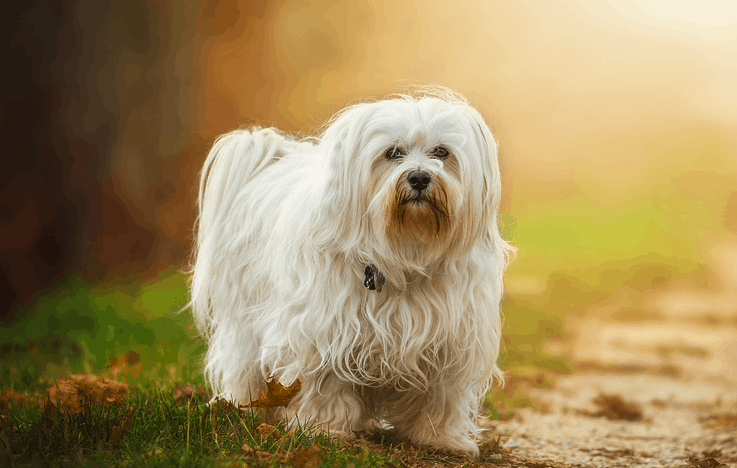
The Havanese is a small breed with a long, silky coat that can be white, black, or any combination of colours. This breed stands between 8-11 inches tall and weighs between 7-13 pounds. They have a lifespan of 12-15 years.
The Havanese is a friendly and outgoing breed that is great with children and other pets. They are known for their playful and energetic nature and make great lapdogs. They require regular grooming to maintain their coat’s appearance.
#11. Lhasa Apso
The Lhasa Apso is a small breed with a long, thick coat that can be black, white, or any combination of colours.
This breed stands between 10-11 inches tall and weighs between 12-18 pounds. They have a lifespan of 12-15 years.
The Lhasa Apso is an independent and reserved breed that can be aloof with strangers. They make great watchdogs and require regular grooming to maintain their coat.
#12. Maltese
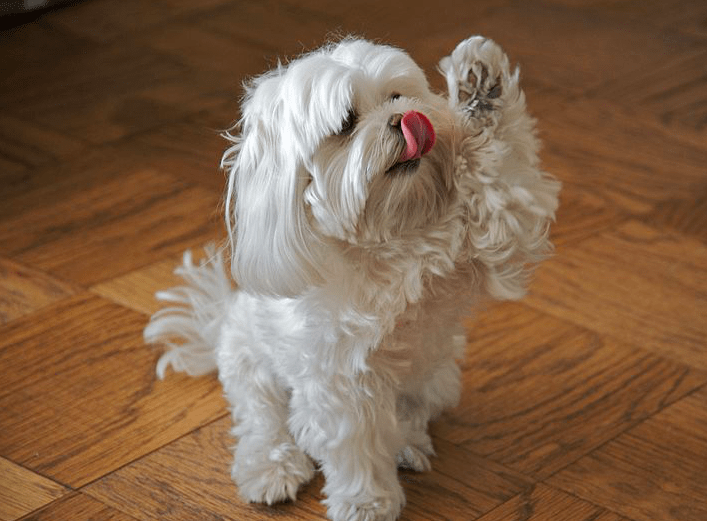
The Maltese are a small breed with a long, silky coat that can be white in colour. This breed stands between 7-9 inches tall and weighs between 4-7 pounds. They have a lifespan of 12-15 years.
Maltese is a friendly and outgoing breed that is great with children and other pets. They are known for their playful and energetic nature and make great lapdogs. They require regular grooming to maintain their coat’s appearance.
#13. Old English Sheepdog
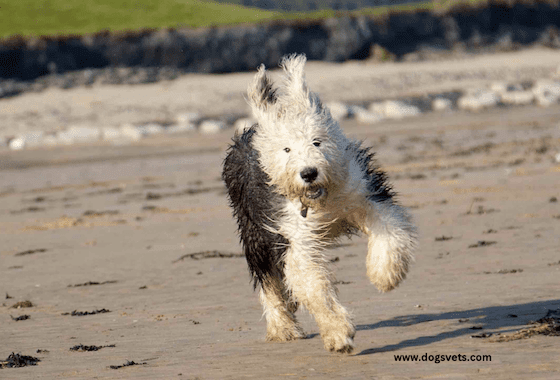
The Old English Sheepdog is a large breed with a long, shaggy coat that can be blue or grey. This breed stands between 22-27 inches tall and weighs between 60-100 pounds. They have a lifespan of 12-15 years.
The Old English Sheepdog is a friendly and outgoing breed that is great with children and other pets. They require regular grooming to maintain their shaggy coat.
#14. Pomeranian

The Pomeranian is a small breed with a long, fluffy coat that can be any colour. This breed stands between 6-7 inches tall and weighs between 3-7 pounds. They have a lifespan of 12-15 years.
The Pomeranian is a friendly and outgoing breed that is great with children and other pets. They are known for their playful and energetic nature and make great lapdogs. They require regular grooming to maintain their fluffy coat.
#15. Samoyed
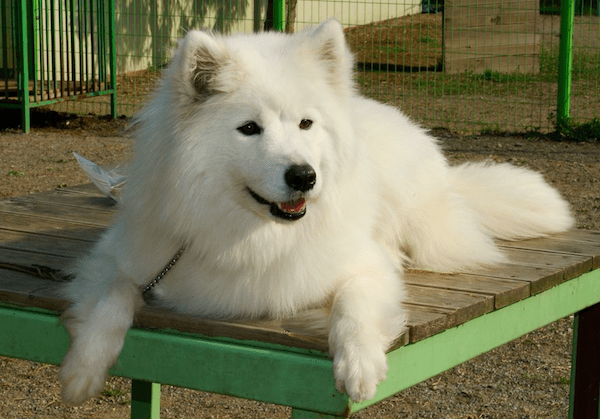
The Samoyed is a large breed with a thick, fluffy coat that can be white in colour. This breed stands between 19-24 inches tall and weighs between 35-50 pounds. They have a lifespan of 12-15 years.
The Samoyed is a friendly and outgoing breed that is great with children and other pets.
They are known for their love of the cold and make great sledge dogs. They require regular grooming to maintain their thick coat.
In conclusion, these 15 long hair dog breeds with gorgeous locks are sure to turn heads and are perfect for those who love to groom and maintain their pet’s coat.
Each breed has its own unique personality and characteristics, so be sure to research and choose the one that best fits your lifestyle and personality.
Tips to know about long-haired dog breed
When owning a long-haired dog breed, it’s important to remember that they require a significant amount of grooming and maintenance to keep their coats looking beautiful.
Here are a few tips to help you care for your long haired dog breed:
Brush your dog’s coat regularly: Long haired dog breeds require daily brushing to remove tangles and mats from their coat. This will also help to distribute natural oils throughout the coat, keeping it healthy and shiny.
Give your regular dog baths: Long haired dog breeds need regular baths to keep their coats clean and free of dirt and debris. Use a high-quality dog shampoo that is specifically formulated for long haired breeds.
Trim your dog’s nails: Long haired dog breeds can have sensitive paws, so it’s important to keep their nails trimmed to prevent injury.
Check for ear infections: Long haired dog breeds are more prone to ear infections due to their long hair, so it’s important to check their ears regularly and keep them clean.
Invest in a good grooming tool: Having the right tool for the job will make grooming your long haired dog a lot easier. A slicker brush and a metal comb are essential for detangling and removing mats.
Visit a professional groomer: If you’re not comfortable grooming your dog yourself, consider taking them to a professional groomer. They can give your dog a haircut, trim their coat, and take care of any other grooming needs.
Be prepared for shedding: Long-haired dog breeds do shed, so be prepared to vacuum and clean your home more frequently.
By following these tips, you’ll be able to keep your long-haired dog breed looking and feeling its best. Additionally, it’s always a good idea to consult with your vet and ask for tips to take care of your dog breed.
Breeds to avoid
When it comes to long-haired dog breeds, there are a few breeds that may not be the best fit for everyone.
Here are a few breeds to consider avoiding if you’re not prepared for the grooming and maintenance required:
Afghan Hound: This breed is known for its long, silky coat that requires daily grooming. They also shed a lot, so they’re not a great fit for people with allergies.
Shih Tzu: This breed also has a long, silky coat that requires daily grooming. They also have a tendency to develop matting, which can be difficult to remove.
Lhasa Apso: Like the Shih Tzu, the Lhasa Apso also has a long, silky coat that requires daily grooming. They also have a tendency to develop matting.
Old English Sheepdog: This breed has a thick, shaggy coat that requires daily grooming. They also shed a lot, so they’re not a great fit for people with allergies.
Maltese: This breed has a long, silky coat that requires daily grooming. They also have a tendency to develop matting and are prone to dental issues.
Pekingese: This breed also has a long, silky coat that requires daily grooming. They also have a tendency to develop matting and are prone to breathing issues due to their flat face.
Bichon Frise: This breed also has a long, silky coat that requires daily grooming. They also have a tendency to develop matting and are prone to dental issues.
It’s important to keep in mind that every dog is unique and may have different grooming needs, so it’s always a good idea to consult with your vet and ask for tips to take care of your dog’s breed.
Question and Answer about Long haired dog breeds
What is the lifespan of an Afghan Hound?
The Afghan Hound has a lifespan of 12-15 years.
What is the weight range of a Bichon Frise?
The Bichon Frise weighs between 8-12 pounds.
What is the height range of a Border Collie?
The Border Collie stands between 18-22 inches tall.
What is the coat color of a Chow Chow?
The Chow Chow’s coat can be red, black, blue, or cream in color.
What is the personality of a Cocker Spaniel?
The Cocker Spaniel is a friendly and outgoing breed that is great with children and other pets.
What is the special grooming requirement of a Collie?
The Collie requires regular grooming to maintain their long, thick coat.
What is the purpose of a Havanese?
The Havanese is a friendly and outgoing breed that is great with children and other pets. They are known for their playful and energetic nature and make great lapdogs. They require regular grooming to maintain their coat’s appearance.
Fact Check
We hope you enjoyed reading this article. What are your thoughts on the topic?
“At [Dogsvets.com], our goal is to bring you the most accurate and up-to-date information on all things pet-related.
If you have any additional insights or would like to advertise with us, don’t hesitate to get in touch.
If you notice any errors or discrepancies in our content, please let us know so we can correct them.
